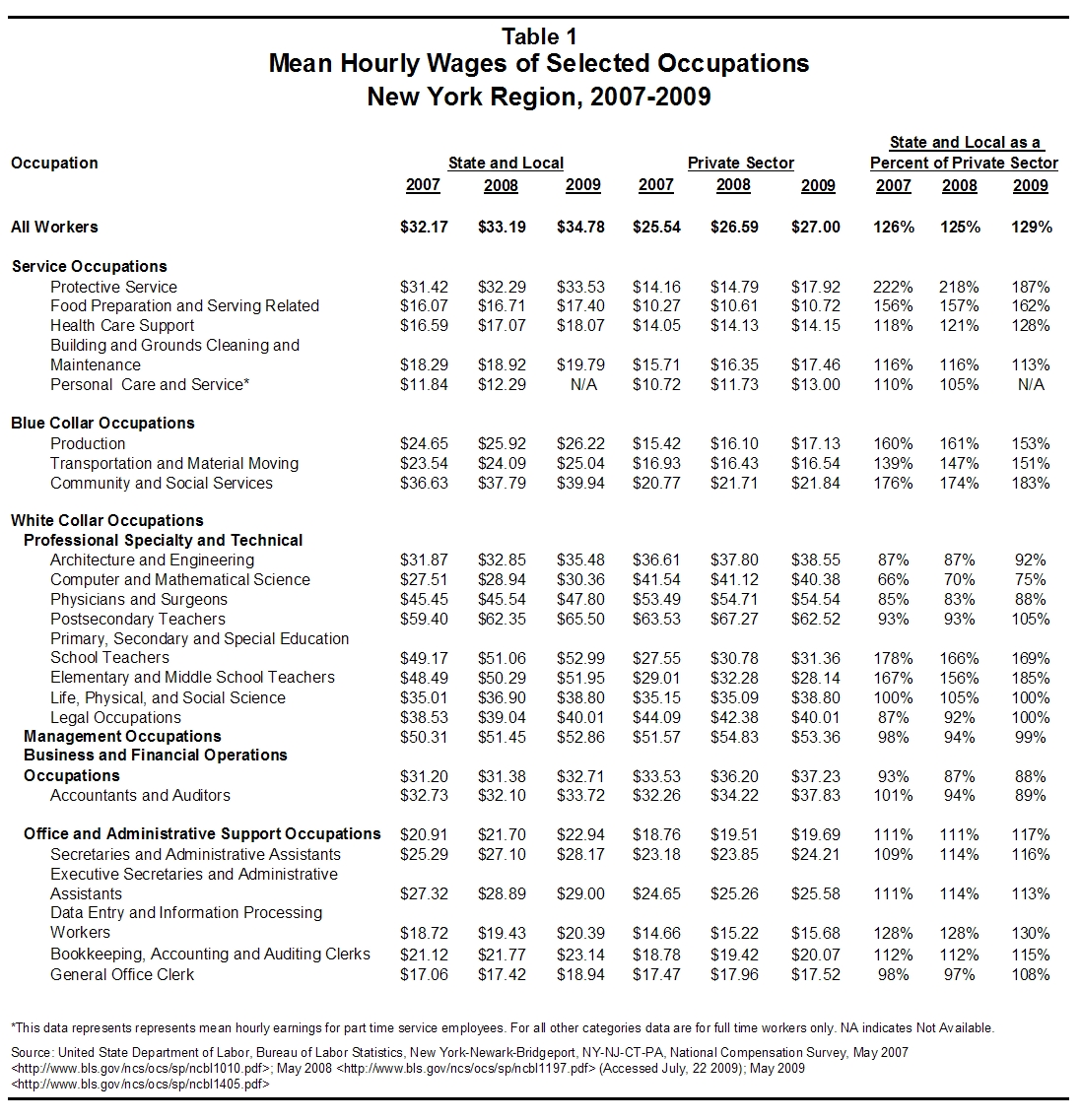The Public and Private Sector Wage Disparity: An Update
Last Friday, in an opinion piece in the Wall Street Journal, Mort Zuckerman referred to a 2005 CBC report, The Case for Redesigning Retirement Benefits for New York's Public Employees. The report recognized an historical disparity between wages in the public and private sectors favoring the private sector and identified this pattern as a reason for the more generous retirement benefits established decades ago for public sector workers. However, it argued that for many state and local government employees in New York who had become unionized, such disparities no longer existed and, hence, the labor market case for more generous retirement benefits for public sector workers was no longer valid.
The report relied upon evidence drawn from an annual U.S. Bureau of Labor Statistics (BLS) survey covering workers in the New York regional labor market in April 2004. The survey covered numerous specific occupation groups. While for some managerial and technical occupations wages were higher in the private sector, a large number of service and blue collar occupations had wages that were higher in the public sector. Such occupations included secretaries, bookkeepers, protective service workers (excluding polices officers), food service workers, health service workers, cleaning and buildings service workers, transportation and material moving workers, equipment cleaners and laborers, librarians and teachers.
We have now updated our analysis with BLS data from 2007-2009 and the same pattern continues. Managerial and technical positions continue to be better paid in the private sector, but most service and blue collar occupations have higher wages in the public sector. As shown below, hourly wages for service workers in protective services, food preparation, and building and grounds cleaning all were significantly higher in the public sector. Similarly, among blue collar occupations production and transportation and material handling workers had higher wages in the public sector. Among office and administrative support occupations, wages were higher in the public sector for secretaries and administrative assistants, data entry and information processing workers, and booking and accounting clerks.
